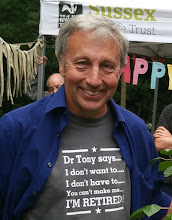A criticism of the rewilding
debate at the moment is the artificial certainty that some have about what wild
nature must have been like. This is
simply unknowable. There is evidence but
this can be interpreted in different ways and can give rise to apparently
different models. This is one criticism
of George Monbiot’s book, and articles he has since published; he has a clear
and unshakable view of the wild in Britain
The nature of a past wild
state is only part any argument for a proposal for rewilding today; nevertheless,
it may be helpful to go over some apparently conflicting ideas of
“wilderness”.
Ideas for pre-human
wilderness apparently fall into two camps: the “closed canopy” model and the
“open savannah” model.
The closed canopy model is
probably what most people think of as “natural”. Leave an area alone and it goes through the
process of succession to climatic climax - bare land becomes colonised by small
plants which give way to bigger plants, then scrub, then small trees, then big
trees and eventually the trees form a closed canopy. This is the “climax” vegetation which is
supposed to be of a particular type for a given climatic zone – hence “climatic
climax”. It is said that once formed
this climax stays basically intact with only small and temporary open patches
within it.
At the other end of the
spectrum is the open forest or savannah model.
The closed canopy model forgets the effect of most natural processes,
especially the effect of large herbivores.
The savannah model, it is said, imagines a completely open landscape,
dominated by grazed habitat, with occasional groves of trees. A cycle is envisaged whereby you start with,
say a grassland, trees become established in patches of spiny shrubs or when
grazing happens to be low and then this patch develops into a grove of
trees. Large herbivores then shelter in
these groves, eating regeneration so trees are not replaced so the canopy opens
and grassland reforms.
Both models are probably
just extremes; the reality of original wilderness probably included both
concepts and a great spectrum of diversity in between. But look at the two models a little closer
and perhaps the models are not too far apart.
Once a range of natural
processes are introduced into the picture, proponents of the closed canopy
model generally accept that openings must have been present in the wildwood,
not just small scale and transient but maybe including some that are long term
and even quite large. People talk of
about 80% cover in trees, and even the wooded area would have been more diverse
than we could imagine.
The “groves” in the open savannah
model, however, (according to its major proponent) could well have been
extremely large – say 700 hectares in size, and maybe would have joined
up. The model envisages up to 70% of the
wildwood might have been in closed canopy groves.
80% trees in the closed
canopy model against 70% trees in the open savannah model. Not quite the divergence you might have
imagined!
So, was the original
wildwood mostly forest with occasional opening or largely savannah with joined
up groves of trees – and does it matter?
In my view – no it doesn’t
matter! The point is that the original
wildwood was probably far more diverse than we can imagine. It would have included all the precursor
habitats to the semi-natural habitats we know today, and probably a great deal
more besides. It only matters if people use
a quasi-wilderness argument to push for the destruction of habitats that for
some reason they don’t like! We don’t
know what the wildwood was like, we don’t know how it relates to current
habitats and we don’t know how relevant it is to modern day nature conservation .
With all that uncertainly it seems a good bet to conserve the best of
the range of ecological variation we have today.
This, however is also not an
argument against rewilding. But
rewilding should be about putting the natural processes in place and heading
towards an unknown end point – rather than recreating some supposition of the
wild (and destroying things that don’t fit your idea).

1 comment:
I agree with much of what you say here, Tony, and particularly the point that we don't really know what European temperate landscapes driven largely by natural processes looks like in the past and might look like in the future. It's pretty obvious that open habitat species cannot have maintained viable populations across very large dense forest systems - metapopulations of sun-lovers in restricted open patches widely spaced and relatively isolated surely would not have been viable? I've yet to see any landscape models to test how extensive and interconnected the open portions of a landscape might need to be to sustain open habitat biodiversity. I'm also doubtful that herds of grazers and intermediate feeders (like Equids, European water buffalo, aurochs and bison) could maintain themselves and segregate feeding niches under a closed canopy forest. Of course, the best way to work this stuff out would be natural experiments at a sufficiently large scale to allow seasonal movements and grazing / browsing facilitation among the herbivore (including surrogates for extinct species), and see what happens, ideally starting with a mixed closed-open area.
I'll be talking about this stuff on my blog too.....
https://naturalareasblog.wordpress.com
Post a Comment